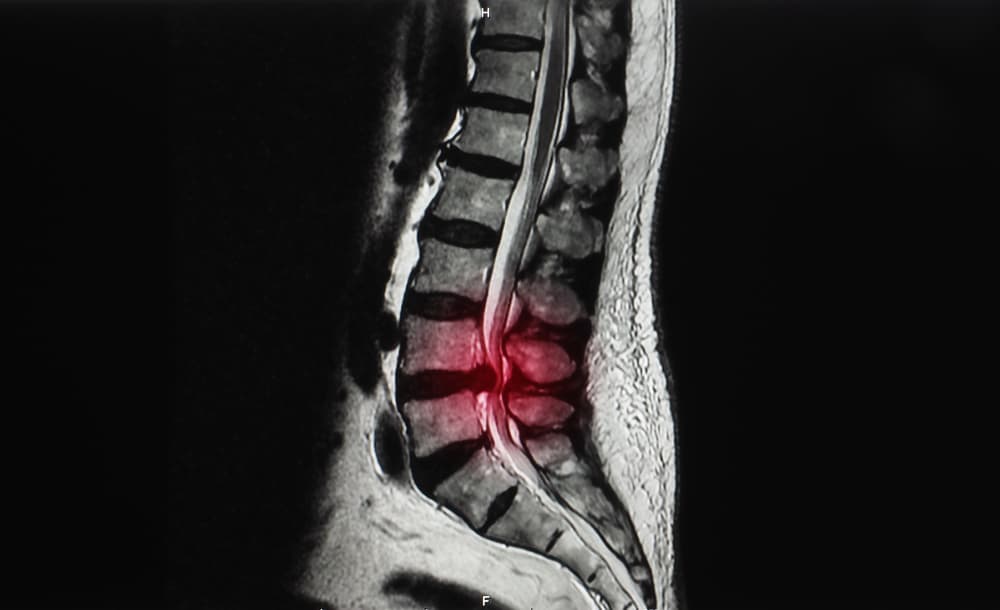For people who struggle with sciatica pain, sometimes might you find yourself reaching for a quick solution to ease the discomfort at that moment and you try and pop your back. You might feel a bit of initial relief, but before you know if the pain is back just as before. Popping your back is not recommended by chiropractors or orthopedic doctors because of the risk for straining or pulling muscles in that area and actually causing more pain. When you experience sciatica treatment your chiropractor may use gentle adjustments that can have more of a lasting impact than just popping your back and with way fewer risks.
What Causes Sciatica?
Sciatica refers to the lower back pain you experience when the sciatic nerve is pinched or compressed, sending shooting pain from your lower back through one or both of your legs. There are a few different ways the sciatic nerve can get pinched and cause these pain symptoms.
Herniated Disc
The discs that separate each of the vertebrae in your spine are made of a spongy material that helps cushion the vertebrae, absorb shock, and prevent the bones from rubbing against one another. A herniated disc, sometimes referred to as a “slipped disc,” occurs when one of these discs becomes dislodged. This can lead to pain as the vertebrae are no longer properly cushioned. Sciatica pain can be specifically caused by a herniated disc when the soft tissue and fluid that makes up the disc ends up pressing on the sciatic nerve.
Degenerative Disc Disease
Over time, natural wear and tear on the body and spine can lead to degenerative disc disease for some people. This disease refers to when the spinal discs separating vertebrae begin to weaken, dry out, and even shift out of place. As these discs begin to degenerate with the natural aging process, it can be common for a disc in the lower back to cause the sciatic nerve to be pinched.
Spinal Stenosis
There are a variety of reasons someone might develop spinal stenosis, which is a condition where the spinal canal begins to narrow. The spinal column houses and protects the nervous system, so if the spine begins to narrow it can put pressure on nerves, including the sciatic nerve. Spinal stenosis is most common in the neck and lower back, making it even more likely to cause sciatic pain.
Other Causes
Sciatica can also be caused by a variety of other conditions, including injury to the lower back or area near the sciatic nerve. Pregnancy can also cause sciatica as the body stretches and adjusts to prepare for the birth of a child. Less common but no less serious causes can also include scar tissue, tumors, and infections.
Chiropractic Treatments for Sciatica
Chiropractic care offers a natural yet effective approach to sciatica treatment. Chiropractors use non-invasive techniques and do not prescribe medications.
Chiropractic Adjustments
Chiropractic adjustments are gentle manipulations of the spine and supporting muscles and soft tissues. The goal of chiropractic care is to use adjustments and other chiropractic techniques to encourage the spine back into its proper alignment. Adjustments can help provide more lasting relief than popping your back at home and help relieve pressure on your sciatic nerve.
Chiropractic Massage
Your chiropractor may also use chiropractic massage therapy techniques to help encourage your muscles to relax and your body to release its natural painkillers called endorphins. Chiropractic massage goes a step further than a spa-like massage because it targets specific muscles and soft tissues that may directly affect your sciatic nerve.
Safe At-Home Techniques for Sciatica
In addition to chiropractic care, your sciatica treatment plan may also include a combination of safe, at-home techniques you can practice to help relieve pain. Your doctor will likely recommend a combination of practices and self-care solutions to help with sciatica. Alternating hot and cold compresses on your lower back can help to provide relief as the heat helps relax your muscles while the cold can help ease any inflammation. Your doctor may also recommend specific exercises, including chiropractic exercises, that can help release pressure in the muscles surrounding your sciatic nerve without aggravating it further. Exercises related to sciatica treatment can include specific stretches and even yoga that can be done at home. Your chiropractor may also recommend lifestyle changes including a focus on proper posture or specific sleep positions to help relieve pain.
If you suffer from sciatica and want to know more about how a sciatica treatment plan can work for you, contact the team of doctors at AICA Orthopedic to schedule a consultation and begin to experience relief from sciatica.


